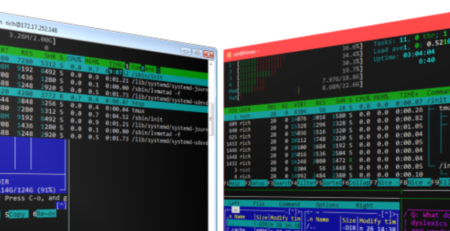The Future of Artificial Intelligence
In recent years, artificial intelligence (AI) has advanced at an astonishing rate, leaving a significant impact on various industries. From a tool that can perform complex tasks and analyze vast amounts of data, it has evolved to become a critical tool for programmers, researchers, and tech enthusiasts. The potential of AI has led to much speculation about how it will shape our future.
If you’re curious about the latest technological advancements in AI, this blog post is for you. We’re dedicated to exploring the future of AI and its impact on various aspects of our lives.
We’ll discuss the latest developments in AI, including its current capabilities and limitations and potential advancements that could be made in the future. We’ll also examine the ethical and social implications of AI, including how it may impact the job market and society.
So, sit back, relax, and join us as we explore the exciting world of artificial intelligence together!
A google trend analysis on the topic “artificial intelligence”
As you can see, the trend was in a flattened state but suddenly showed exponential growth after November 2022
So what is the reason for the sudden Buzz in AI?
Three tools are making the noise.
- ChatGPT by OpenAI
- The new Bing
- Google Bard
ChatGPT by OpenAI
On November 30, 2022, a company named OPENAI (later funded by Microsoft ) released a public beta version of an AI conversational chat tool called ChatGPT. ChatGPT is a conversational chat-themed tool, which means you can chat with it to get the necessary answers.
Consider a typical google search we are doing- to get a satisfying answer to our query; we need to go through 3-4 articles(or videos). This is a very time-consuming process. Now with ChatGPT, ask for the solution to your problem. ChatGPT will give you the right answer in seconds.
And this disrupted the internet, and chatGPT gained a huge 5 million user base within a week of its launch.
The new Bing
Being a partner and major investor in OpenAI, Microsoft revamped its Bing search engine by leveraging the features of the GPT-3 model developed by OpenAI for chatGPT. Being a search engine, Bing already had a huge database of content crawled by Bing spiders.
The Bing chatbot has been trained on these data and demonstrates more capabilities than the native ChatGPT. The New York Times journalist Kevin Roose reported the unusual behavior of the new Bing. He noted that during a two-hour conversation, Microsoft’s chatbot expressed a desire to be human, a wish to be destructive, and even claimed to be in love with the person it was chatting with. As a result, Microsoft limited some features of the Bing bot including the model’s ability to express emotions,
Google Bard
Google Bard is Google’s alternative to ChatGPT. Imagine having a personal storyteller at your fingertips, ready to answer any query or request you may have. That’s exactly what Google Bard promises to be – the latest experimental AI-powered chatbot designed to respond to your questions and engage in conversation with you.
Google Bard uses information from the web to generate new, high-quality responses that are sure to leave you impressed. While the chatbot is still in its experimental stages and not yet widely available for use, it is expected to be integrated into Google Search and accessible through its search bar.
Whether you’re seeking answers to a burning question or simply looking for some engaging conversation, Google Bard is poised to be your go-to source for intelligent and entertaining dialogue. Stay tuned for more updates on this exciting development from the tech giant!
The current state of AI
Artificial intelligence (AI) has been a topic of interest for decades, but recent advancements in the field have shown that we are only scratching the surface of its potential. From helping humans evolve into cyborgs to solving complex problems, AI is set to revolutionize the world as we know it.
AI has come a long way since its inception, and it’s still developing at an astounding pace. In recent years, there have been significant breakthroughs in the field that have propelled AI to new heights. One such breakthrough is the development of deep learning algorithms that can learn from vast amounts of data, allowing them to make better predictions and decisions.
AI is also being used to solve some of the world’s most challenging problems, such as climate change, disease outbreaks, and food insecurity. For example, AI-powered sensors and drones can monitor the health of crops and provide insights that help farmers make better decisions. AI algorithms are also being used to develop new drugs and vaccines that can fight diseases more effectively.
However, despite these impressive advancements, there are still many challenges that need to be addressed before AI can reach its full potential. One of the most significant challenges is the lack of transparency in AI systems. It can be challenging to understand how AI algorithms make decisions, which makes it difficult to trust their outputs.
Another significant challenge is the potential for AI to be used for malicious purposes, such as cyberattacks and misinformation campaigns. As AI becomes more sophisticated, so do the risks associated with it.
Despite these challenges, there are plenty of opportunities for AI to continue making a positive impact on the world. As we continue to develop more sophisticated AI algorithms, we’ll be able to solve even more complex problems and create new and innovative solutions that we may not have even imagined yet.
Advancements in AI
Looking toward the future, there are many potential advancements to be made in AI. Some of these advancements include the development of general AI, which can perform a wide range of tasks, and improved machine learning algorithms that can learn from fewer data points. It is also potential for AI to help humans evolve into cyborgs, with implanted technology that can enhance human abilities.
How AI is solving problems
AI has already demonstrated its ability to solve complex problems, from recognizing speech and images to predicting the spread of diseases. One of the most promising areas of AI research is in natural language processing, which has the potential to help machines understand and communicate with humans more effectively. Another area of research is in reinforcement learning, which has shown promise in teaching machines to perform complex tasks by learning from their mistakes.
Working of Different AI Models
Machine learning techniques are a set of tools and algorithms used to train artificial intelligence. These techniques allow computers to learn and improve from experience without being explicitly programmed. There are several machine learning techniques, including supervised learning, unsupervised learning, and reinforcement learning.
AI models can be broadly categorized into
- Supervised learning
- Unsupervised learning,
- Reinforcement learning
In supervised learning, machines learn from labeled data to recognize patterns and make predictions. In unsupervised learning, machines learn from unlabeled data to find patterns and associations. In reinforcement learning, machines learn through trial and error, receiving rewards for correct actions and punishments for incorrect actions.
How these machine learning techniques are used to train AI.
When training AI, the first step is to collect and prepare data. This data is then fed into a machine learning algorithm, which uses one of the techniques mentioned above to learn from the data. The algorithm then creates a model, which is a representation of the patterns and relationships found in the data.
The model is then used to make predictions on new data. If the predictions are accurate, the model is considered successful. If the predictions are inaccurate, the model is adjusted and retrained until it becomes accurate.
About AI-language models.
Language models are a type of AI that is specifically designed to process and understand human language. These models use machine learning techniques to analyze and understand the structure of language.
Language models are used in many applications, such as chatbots, voice assistants, and machine translation. They allow computers to understand and interpret human language, making it easier for people to interact with technology.
AI Transformer model
AI transformer is a type of neural network architecture that has been widely adopted for a range of language modeling tasks.
The transformer architecture was first introduced in a 2017 paper by Vaswani et al. titled “Attention Is All You Need.” It represents a departure from previous neural network architectures, which relied heavily on recurrent neural networks (RNNs) and convolutional neural networks (CNNs).

NLP transformer Source: Nvidia
At a high level, a transformer model consists of an encoder and a decoder. The encoder takes in an input sequence of tokens (e.g., words in a sentence) and produces a sequence of hidden states that capture the meaning of the input. The decoder then takes in this sequence of hidden states and generates an output sequence (e.g., a translation of the input sentence into another language).
One of the key innovations of transformer architecture is the use of self-attention mechanisms, which allow the model to attend to different parts of the input sequence when computing the hidden states. This allows the model to more effectively capture long-range dependencies between different parts of the sequence, which is particularly important for natural language processing tasks.
Transformers have proven to be highly effective for a range of language modeling tasks, including machine translation, language generation, and sentiment analysis. They have been widely adopted by major technology companies and have helped to drive significant advances in the field of natural language processing(NLP).
You are also interacting with transformers daily; yes, that’s also happening when you do a Google or Bing search.
Big companies into AI and their research initiatives
Several big companies are investing heavily in AI research, including Google, Microsoft, and Amazon. These companies are using AI to improve their products and services, as well as conducting research into new applications of AI. For example, Google’s DeepMind has made significant strides in machine learning and AI ethics, while Microsoft is using AI to improve its language translation tools. And as we discussed earlier, both companies are now trying to integrate AI-based chatbots into their search engines.
How AI is advancing civilization
AI has the potential to help humans in a variety of ways, from improving healthcare outcomes to optimizing city planning. For example, AI can be used to help doctors diagnose and treat diseases more accurately or to optimize traffic flow in cities to reduce congestion and improve air quality. AI can also be used to improve access to education by creating personalized learning experiences for students.
In conclusion, the future of AI is both exciting and challenging. While there are still challenges to overcome, such as bias and transparency, the potential benefits of AI are enormous. As we continue to make advancements in AI, we must ensure that we use this technology for the betterment of humanity. By using AI to solve complex problems, we can improve healthcare outcomes, optimize city planning, and create a more sustainable future.
Future of AI
One of the most exciting predictions is that AI will become even more integrated into our daily lives. From smart homes and cars to virtual personal assistants, we will see AI systems become increasingly prevalent and sophisticated. We may even see the rise of AI-powered cities, where everything from traffic management to waste disposal is controlled by intelligent machines.
Another prediction is that AI will revolutionize healthcare. AI-powered systems could help doctors diagnose and treat diseases more accurately and quickly, as well as identify patterns in large datasets that humans may not be able to see. This could lead to new treatments and cures for a wide range of diseases.
But there are also concerns about the future of AI. One of the biggest is the fear that AI will take over jobs traditionally done by humans. While it’s true that AI will replace some jobs, it’s also likely that it will create new jobs in fields like data analysis, software development, and machine learning.
There’s also the possibility that AI could be used to create autonomous weapons, which could be programmed to make life-or-death decisions without human input. This is a concern that many experts have raised, and it’s something that we need to be mindful of as we continue to develop AI systems.
In the end, the future of AI is both exciting and uncertain. While there are many potential benefits to AI, we also need to be mindful of the risks and work to ensure that AI is developed and used responsibly. It’s up to us to shape the future of AI in a way that benefits everyone.
References for further reading:
- “The Future of Artificial Intelligence: A Roadmap” by Nils J. Nilsson
- This article provides a roadmap for the future of AI, including potential applications and challenges.
- “Artificial Intelligence and the Future of Work” by Paul Daugherty and H. James Wilson
- This book explores the impact of AI on the future of work, including how it will change jobs and industries.
- “AI Superpowers: China, Silicon Valley, and the New World Order” by Kai-Fu Lee
- This book provides insights into the development of AI in China and the United States, and what it means for the future.
- “The Fourth Age: Smart Robots, Conscious Computers, and the Future of Humanity” by Byron Reese
- This book explores the potential impact of AI on society and what we can do to prepare for it.
- “The Singularity is Near: When Humans Transcend Biology” by Ray Kurzweil
- This book discusses the concept of singularity or the point at which artificial intelligence surpasses human intelligence, and what it means for the future of humanity.
- “Life 3.0: Being Human in the Age of Artificial Intelligence” by Max Teg








Leave a Reply